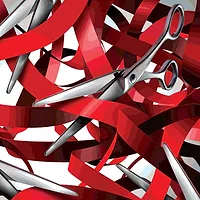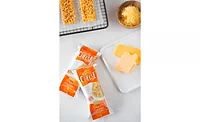Demand for Variety Creates Challenges for Processors

Walk down the snack aisle of a grocery store and you will find a multitude of chip flavors ranging from salty to sweet to spicy—and some that are downright exotic or extreme. The explosion of new flavors, varieties, and variations of food and beverage products is great for consumers. But with 80 percent of food and beverage processors now producing 100+ SKUs, the so-called “SKU-mageddon” requires a challenging move toward de-specialization that creates serious challenges and major risks.[1]
De-specialization Can Derail Your Production Operations
As anyone who has worked in production knows, de-specialization is the enemy of productivity. For food and beverage production facilities of all sizes and types, the SKU-mageddon presents several major challenges:
- Productivity: Frequent changeovers = more downtime—lowering throughput and hurting overall productivity.
- Inventory: New products and flavors often mean new ingredients and even new suppliers—adding additional challenges of managing new supplier relationships, new inputs, and a more diverse inventory.
- Quality & Compliance: Producing a wider range of products expands the challenge of maintaining quality across every SKU and ensuring compliance with ever-increasing regulations governing ingredient receiving and storage and changeover procedures.
- Food Safety: Nearly half of food and beverage production facilities say food safety costs and requirements are already rising.[2] Adding new inputs, new production workflows, and more frequent changeovers adds new risk and new “fail points” for contamination and adulteration within operations.
- Allergens: As the variety and sourcing of ingredients increases, so does the potential for allergen cross-contamination.
Shifting to a Proactive, Risk-Based Approach
As the SKU-mageddon places increasing demands on your operations—and with competition in the industry growing more intense—you simply cannot afford to wait until a problem manifests itself to take corrective action. You need to anticipate the challenges of de-specialization. You need to shift to a proactive, risk-based approach to things like quality assurance, food safety, cleaning and sanitization, and pest management. This means actively searching for and identifying issues that increase the risk of an issue—and taking corrective action immediately, before the risk becomes a reality.
Four Key Areas of Focus
Where do you start? Here are four key areas of focus for your proactive, risk-based approach to preparing for the SKU-mageddon:
-
Receiving Best Practices and Ingredient Inspection: Inspecting inputs at the entry point is essential to maintaining the integrity and safety of your production environment—particularly with the variety of inputs (and vendors) increasing as you produce a larger number of SKUs.
Insider Tip: Your food safety, sanitation, and pest management partners should provide regular assessments of your receiving protocols, including best practices and customized consultations on how to inspect your ingredients for signs of spoilage, contamination, pest damage, or pest infestation. This expert consultation is particularly useful when introducing new ingredients that may present new and unfamiliar pest and food safety risks. -
Inventory/Storage Best Practices: As the variety of ingredients expands, inventory management and ingredient storage become even more critical. Following best practices can help you mitigate pests and food safety issues within your ingredient inventory, prevent inventory loss due to spoilage, and keep storage and processing equipment and environments in a hygienic state.
Insider Tip: Not sure if you’re following best practices for inventory and ingredient storage? Your vendor partners should be able to provide the latest best practices—as well as offer on-site assessment of your current protocols to identify opportunities to improve. -
Sanitizing and Cleaning Production Equipment: You know that cleaning and sanitization of your production equipment protects product quality and food safety. However, as SKUs increase and changeovers become more frequent, cleaning and sanitization comes into the spotlight—absolutely critical to preventing flavor carryover, as well as allergen cross-contamination and other food safety risks.
Insider Tip: Leading sanitization and food safety partners can help you make sure you have the right cleaning and sanitization products—as well as the right protocol—for the specific ingredients, substances, and risks of your production operations. This product-plus-process combination helps you ensure food safety and maintain the consistency and integrity of your production operations, while delivering measurable productivity improvements that support bottom-line cost reduction. -
Assessing and Streamlining Sanitation and Food Safety Protocols: As your processing operation grows more complex, your cleaning, sanitization, and food safety protocols must account for this complexity. Make sure you’re reviewing your sanitization and food safety programs and protocols at least twice a year—and any time you add a new ingredient or a new production process to your operations. Take special consideration of opportunities to simplify or streamline cleaning and sanitation during production changeovers. De-specialization and increased changeovers are already impacting throughput—any efficiency you can gain through smarter cleaning and sanitization will drive competitive advantage for your business.
Insider Tip: Your sanitation, food safety and pest management partners should be able to provide a full, detailed assessment of your cleaning and sanitation program. The program should not only identify your unique risks and potential fail points, but also identify opportunities to streamline and gain efficiency—for example, bringing both organic and nonorganic operations under a single, consistent food safety, sanitation, and pest management program.
How Leading Processors Are Preparing for SKU-mageddon
The SKU-mageddon is only accelerating. In fact, introducing new products is now the top growth strategy in the food and beverage industry.[2] But while the challenges of de-specialization can seem overwhelming, the truth is, leading processors aren’t tackling SKU-mageddon alone. They partner with third-party vendors to address specific pain points—and build proactive strategies—to manage the challenges of de-specialization.
This article looked at four innovative ways that forward-thinking food and beverage processors are leaning on service partner expertise to reduce the burdens of de-specialization—protecting product quality and safety while powering productivity and performance.
The food and beverage industry is constantly trying to keep up with the demands of a changing consumer world. With increased regulations and changing trends in the market, it’s easy to put cleaning, sanitation, and maintenance on the back burner to deal with the time-sensitive issues first. Ecolab has put together a collection of resources and easy-to-implement ideas to help make quick-win improvements throughout your facility to help exceed regulations and boost operational efficiency. Visit ecolab.com/KeyIngredients.
1. www.pmmi.org/report/2019-trends-and-advances-food-packaging-and-processing.
Looking for quick answers on food safety topics?
Try Ask FSM, our new smart AI search tool.
Ask FSM →








